South Korea - From Seoul to Suwon and Jeonju
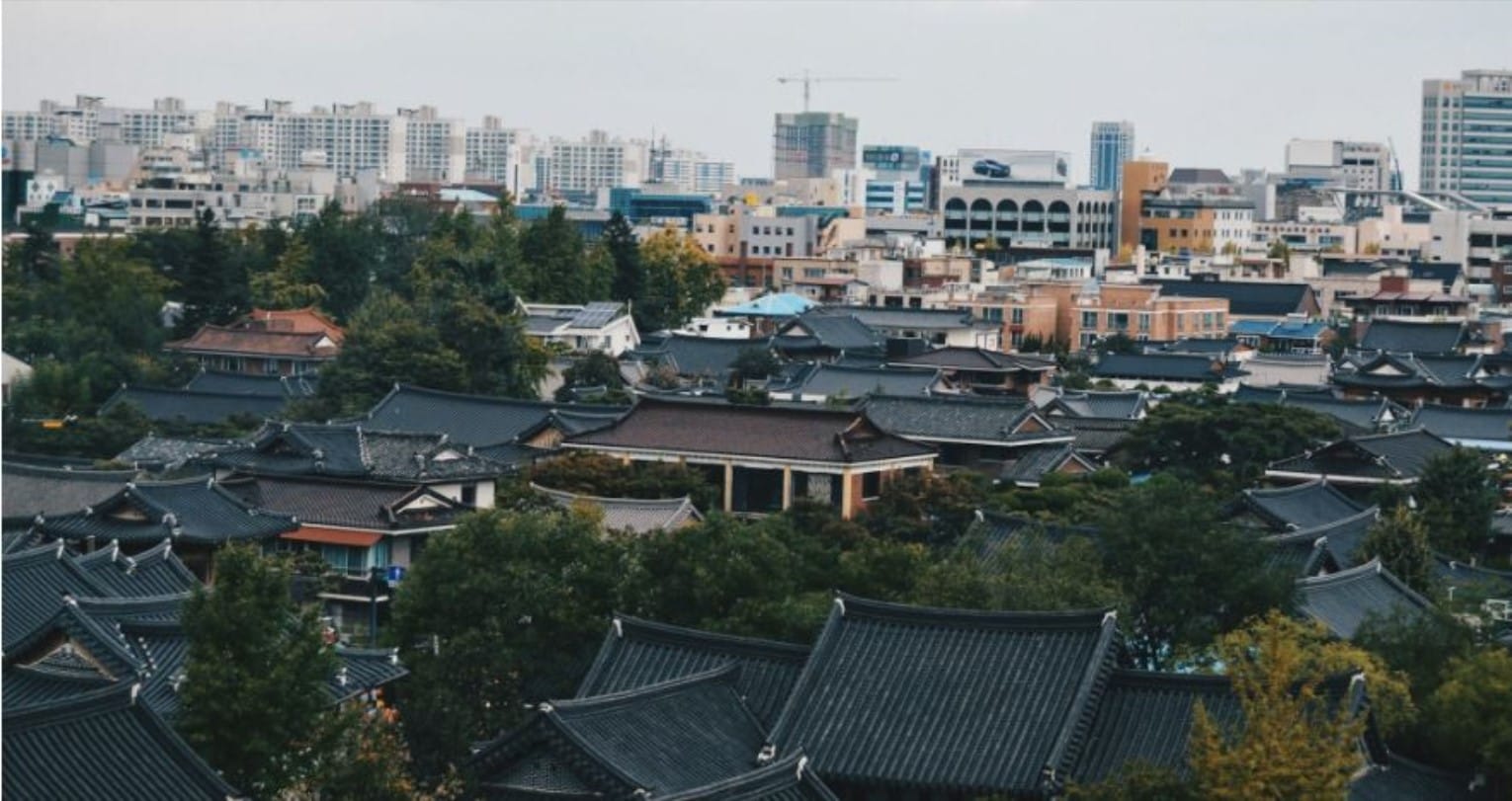
Leaving Seoul it was a short drive to Suwon, known for its World Heritage listed Hwaseong Fortress. In the late 18th century Joseon dynasty ruler King Jeongjo built the fortress walls planning to move his capital to Suwon. However, the King died and with him the plan, although his hobby of archery lives on as a popular pastime in this area.
The restored 4 gates, command posts, pavilions, towers and fire-beacon platforms still rise majestically above the skyline. Today the city plays an important economic role, home to Samsung Electronics, the largest Korean company, followed by Hyundai/Kia and LG.
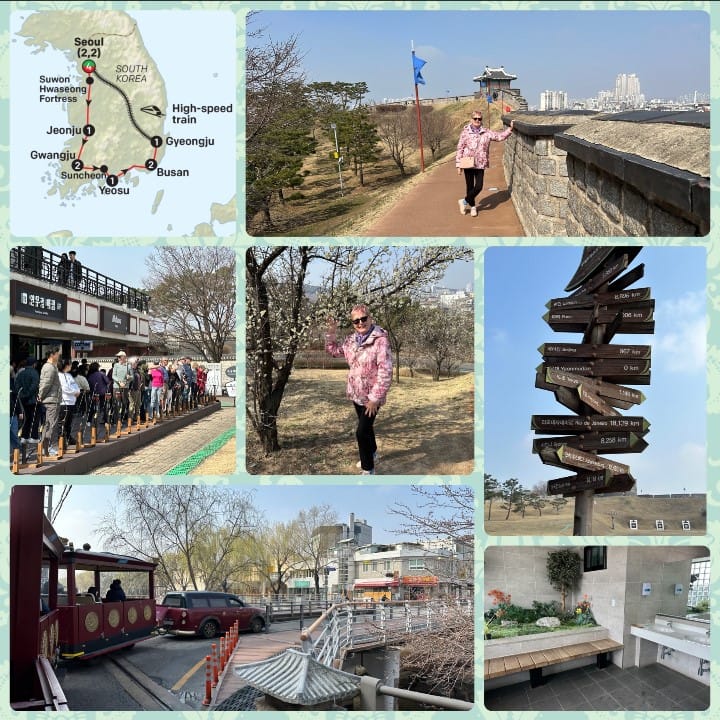
As every traveller knows, toilets are often uppermost in our minds - how long before we find one? How clean are they? Will there be toilet paper? South Korea is the only country where there are no such concerns - toilets are everywhere - in department stores usually on every floor. Every site we visited had toilets dotted about. Most are of the Japanese type, with a myriad of buttons; often the seats are heated even at our hotels and nearly always with paper!
Continuing south, our next stop was Jeonju to visit the the largest traditional hanok village in Korea - more than 700 hanok houses are nestled in the city centre.
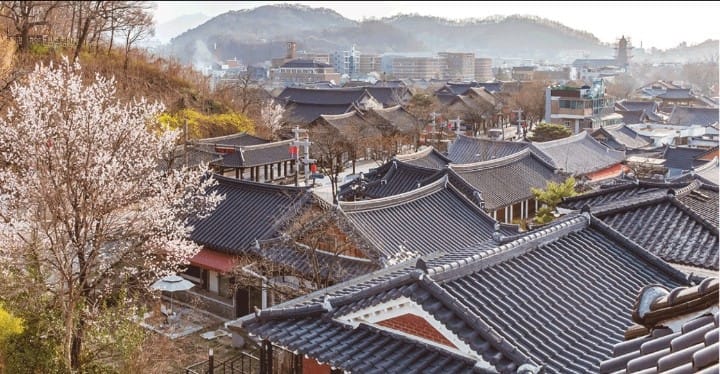
This is a popular weekend escape for Seoulites. Again, they often hire traditional dress for those all-important Instagram moments! The streets are wider than the village we visited in Seoul, packed with people parading the streets, relaxing in tea houses or queueing for street food. A great buzz.
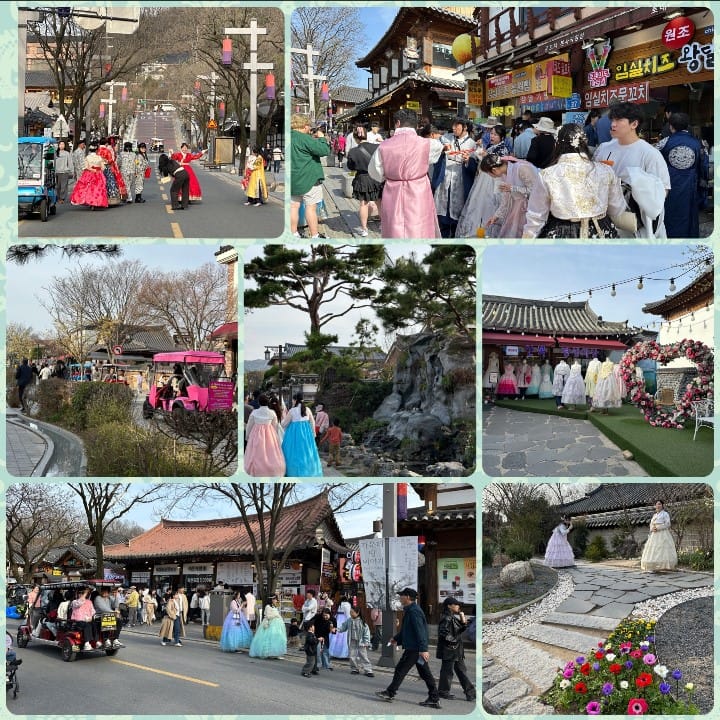
Korean food is closely associated with medicine and fermented foods are common. There is an obsession with fitness and healthy food - hiking is a popular pastime, any food or supplement promoted as improving health is keenly sort.
In Jeonju, we learnt to make kimchi - a staple at every meal. Homes often have a separate refrigerator just to store their kimchi at its own special temperature. Kimchi is a fermented side dish consisting of salted vegetables, often cabbage or Korean radish with a wide selection of seasonings - chilli powder, spring onions, garlic, ginger and salted fish (usually anchovies).
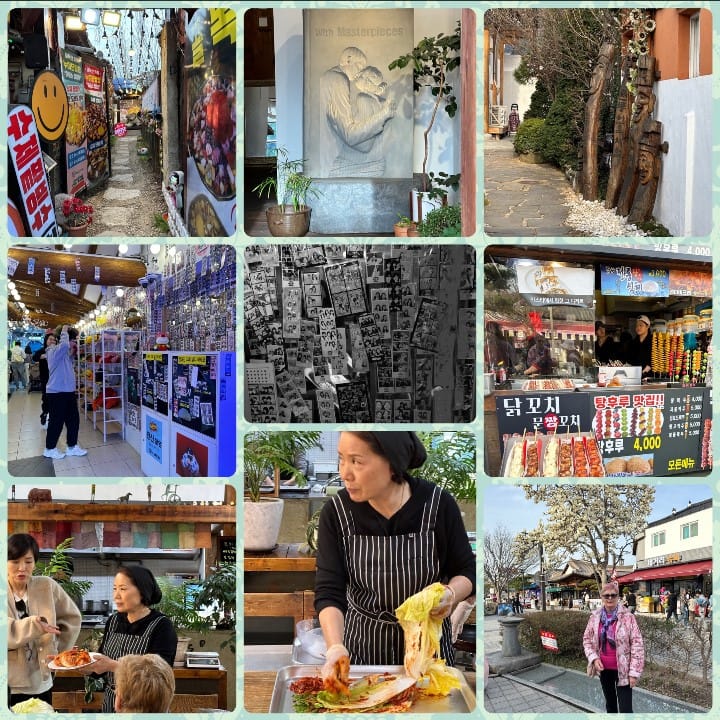
The next day commenced with a pleasant walk to Tapsa Temple, at the foot of Mt Maison, famous for its free-standing stone pagodas, made of natural stone.
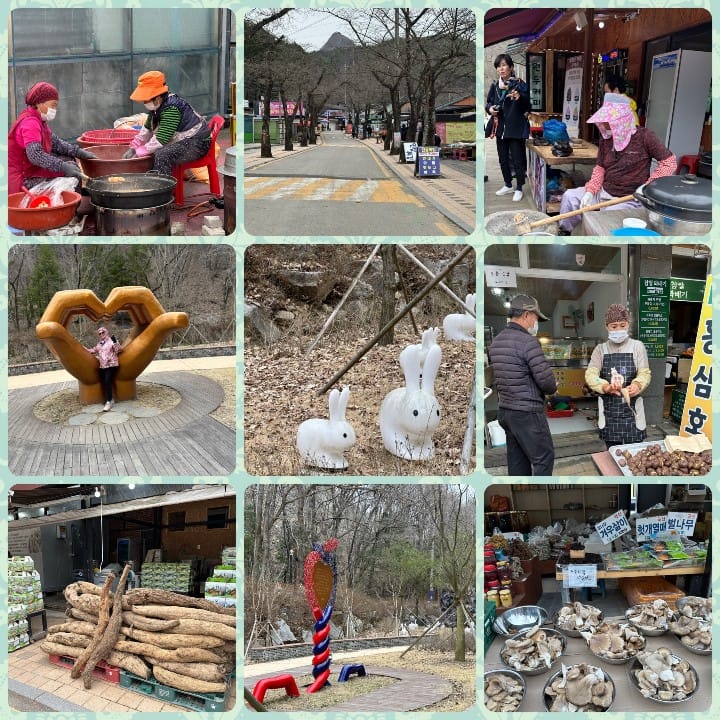
At the age of 25, Lee Gap Yong (1860-1957), made this area his home to meditate and over 30 years, single handedly erected around 100 stone conical pillars.
Ranging in height from 1-13.5metres - the twin pagodas behind Daeungjeon Hall are the tallest, standing three times the height of an average adult. Much later in life, Lee Gap Yong became an ordained monk.
What an incredible place and certainly unique as a Buddhist Temple.
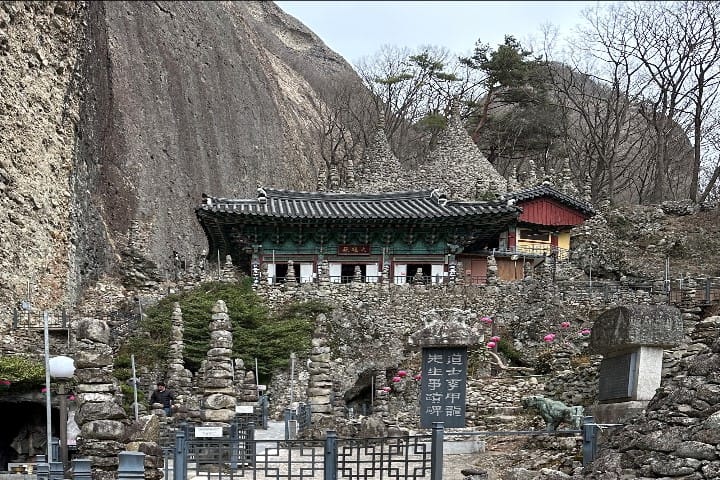
The following day also started with a walk, this time through the extensive Juknokwon Bamboo Garden. Under cloudy skies the rain held off, occasional wisps of wind swayed and whispered through the bamboo - a contemplative time to enjoy this peaceful place.
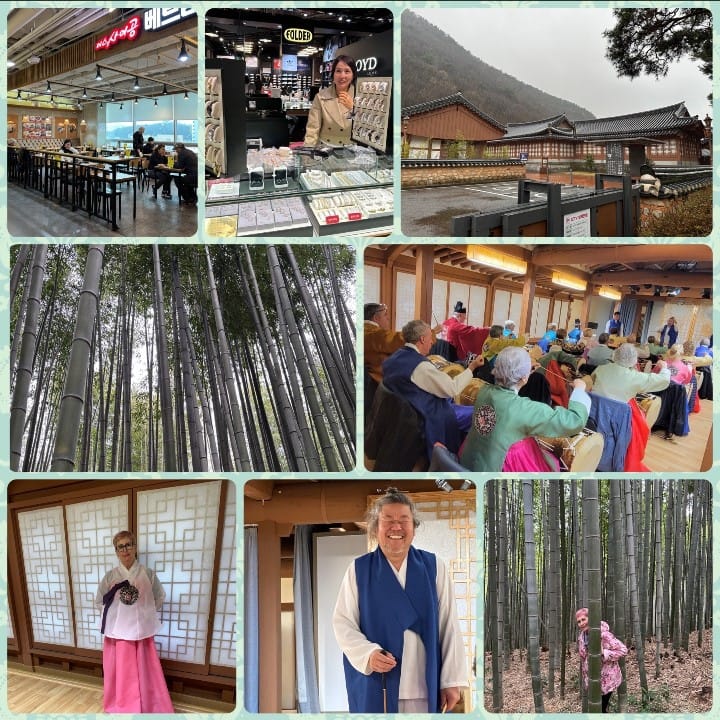
The rain set in at lunch time though, a large department store with food hall, the ideal place for lunch, before heading to the Gwangju Cultural Centre for a fun afternoon - we became Korean princesses wearing Harbok traditional dresses and a local music teacher taught us the play the drums.
Our teacher was a lot of fun and we have a great time - not sure though we will proficient enough to be performing any time soon!
Join me tomorrow as we continue to explore the wonders of South Korea.
